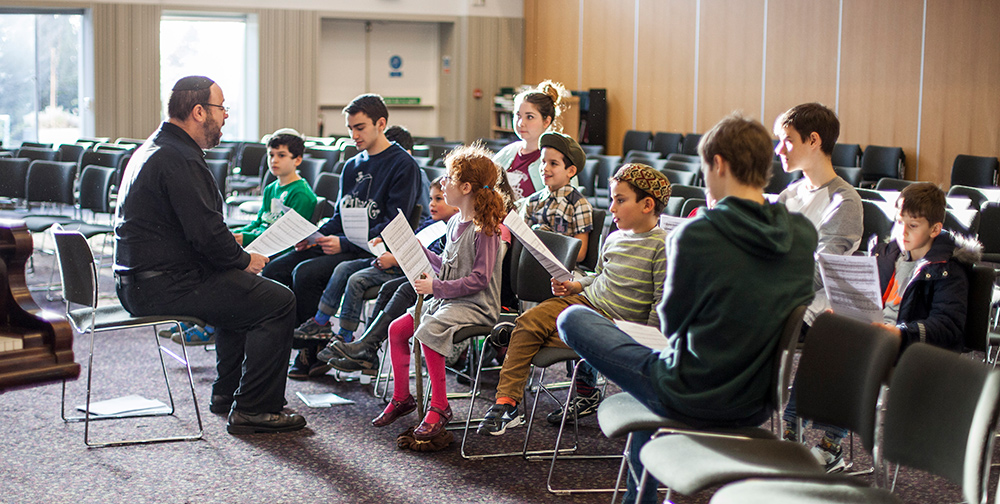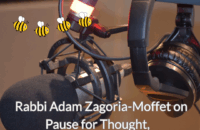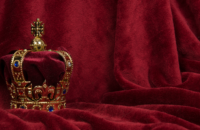Limmud 2015: We make ourselves part of the communal conversation, but we have to keep it going

As a survivor of a Jewish secondary school and a veteran of over 10 years in Noam, I’d like to think that I’ve had my fair share of Jewish experiences. I did the Bar Mitzvah circuit in 2004-5, and that was wild. Those of who have been to Limmud probably know this already, but for those of you who are yet to get their hallowed nametag and handbook, let me tell you that Limmud out-Jews them all.
I say this with the deepest affection. Limmud is a safe space to practice and discover your Judaism in a multitude of ways, all at once. Intense textual learning can lead you to the Chevruta Project and to scholars from far and wide. Alternatively, you can learn about Jewish culture or history, make some Jewish food or sing Jewish songs. All these sessions can introduce you to ways to practice and discover your Judaism that you had never encountered before. And when you want to take a session off, you can meet all sorts of people from ‘The Tribe’ and work out quite how many mutual friends you’ve got.
In a community that seemingly is being led by at least three organisations, if not more, there is something refreshing about the non-hierarchical way Limmud operates. Every session, save for the slightly nauseating Last Night Gala, is competing for bums-on-seats with as many as tens of other sessions at once. Presenters that may receive star billing in other Jewish events will lose people to plucky upstarts like yours truly, speaking on esoteric topics like the relationship between the Jewish and Hip Hop communities.
As a result of this, you get a startling look into the community’s priorities, unfiltered through Boards and Councils. You can be excused for thinking Anglo-Jewry’s concerns began and ended with Israel if you followed the output of the Jewish Press. At Limmud, however, you can find that there’s standing room only at the sessions coordinated by KeshetUK, the Jewish LGBT coalition, and you’d struggle to find a way into a session featuring testimonies from young people leaving the Charedi community.
This vast incubator of Jewish issues gives vast power to those who turn up. You can grill communal leaders – who we foolishly leave to represent us outside of events such as this – at panels and over meals. I had a hand in arranging a fantastic shidduch for Israel’s Acting Ambassador with a group of teenagers from youth movements, giving both parties a very different conversation to what they’re used to.
On a wider level, there are winners and losers in this power game at Limmud. More traditional communities, for example, certainly lose out. This is down to structural reasons – many orthodox (and certainly ultra-orthodox) communities are unlikely to subsidise their leaders to attend the Conference – but also down to the way the Conference is viewed as a space only for progressive Jews. The existence of orthodox figures at Limmud – most notably of course the Chief Rabbi – clearly goes against this, but it’s difficult to challenge these long-held views of the 35-year-old Conference. The irony of this, of course, is that if Orthodox leaders chose to attend en masse, they would radically change the conversation.
The main beneficiary of this ‘decisions are made by those who show up’ ethos is the Masorti community. We are massively overrepresented in the Limmud bubble, both in the machers that make the Conference tick, and in the clientele that colonise the bar. This leads to a community that is more attune to the needs of our admittedly small clan, while on the flip side allowing us to influence the communal conversations.
It is at this point that Limmud can go from being a developmental opportunity for those that go, to an experience with powerful, lasting communal effects. In our annual communal conversation, each of us is presented with a chance to shape the experience of those around us. Whether it’s a poignant session, a well-crafted question, or a conversation over a meal or drink, there is the capacity for change there. When doing these things, we are representing a Masorti outlook; and given that Masorti Jews number around 2% of the whole Anglo-Jewish community, such an outlook is all too rare.
This great opportunity in turn challenges us to move to the next step. How are we harnessing the chances that we create to make our mark on the Jewish community? How do we take a little bit of the intensity of these experiences into the rest of our lives? How are we breaking out of the bubble? I am a big fan of bubbles – my favourite time of year is Noam Summer Camp, and the harmonious, self-sufficient, peer-led community that we build for ourselves for two weeks a year. As beneficiaries of these communal bubbles – be they at winter conferences or summer camps – we should make it our responsibility to make sure that we see little echoes of what makes the bubble so amazing throughout the year. In this way we can make our community that little bit lovelier, and make our bubble that little bit sweeter when we next see it.
Amos is Mazkir of Noam Masorti Youth. Applications for Noam Summer Camp are now open, to book your place and learn more about Camp, bursaries, and Israel Tour visit www.noam.org.uk.




